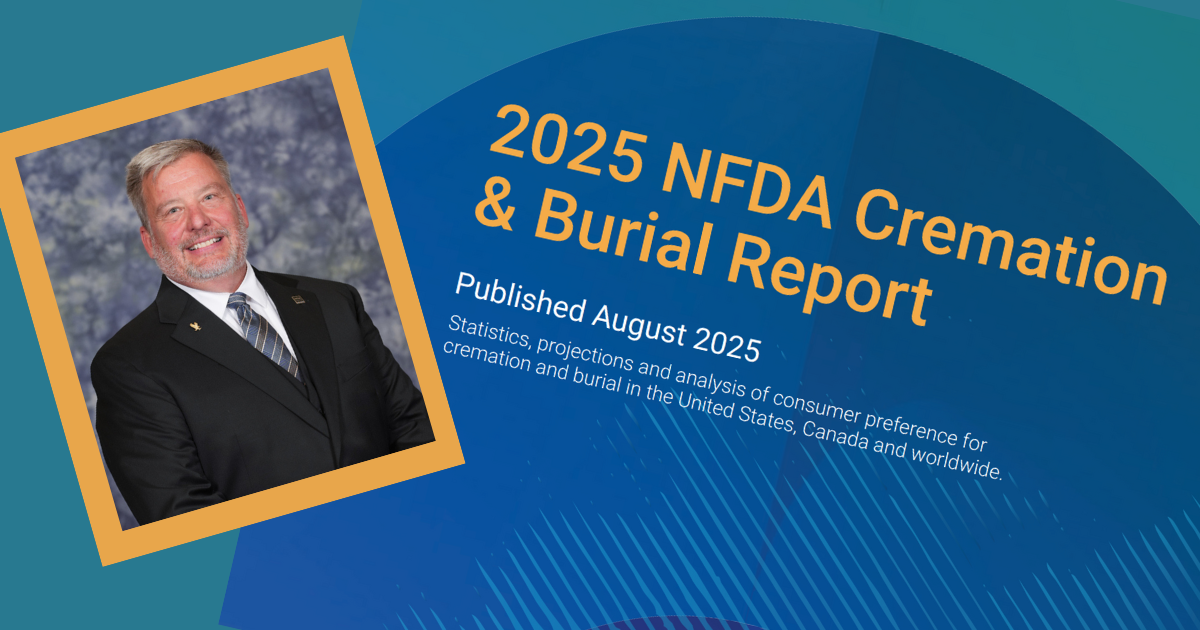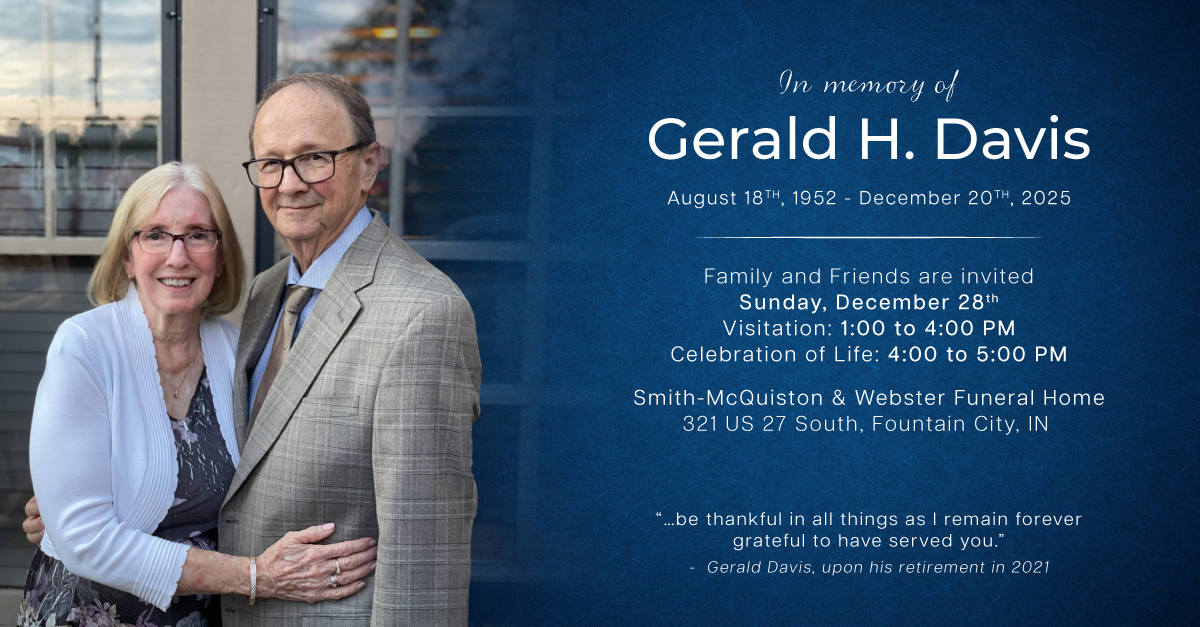Navigating the Cremation Surge: Lessons from Dutch Nie and NFDA’s 2025 Cremation & Burial Report
The National Funeral Directors Association (NFDA) 2025 Cremation & Burial Report confirms what the deathcare community is witnessing first-hand: cremation is not just growing—it’s reshaping the landscape of funeral service.
According to the report, the U.S. cremation rate is projected to reach 63.4% in 2025, compared to just 31.6% for burial. Additionally, the report projects cremation to rise to 82.3% by 2045, while burials are expected to decline to 13%.
Those particular statistics aren’t that surprising, as cremation rates have been climbing for years. What’s really revealed in the NFDA report, however, are the ripple effects of these numbers — along with some interesting projections that funeral directors should understand, adapt to, and prepare for now, rather than later, to survive and thrive in this evolving profession.
Dutch knows deathcare
For guidance in navigating the changing deathcare landscape, there is perhaps no better voice than Douglas R. “Dutch” Nie II, NFDA’s 2023-24 President and second-generation funeral director and owner of his family’s funeral home, Nie Family Funeral Home & Cremation Service in Ann Arbor, Michigan. After 35 years in the profession and multiple leadership positions on both the state and national levels, Nie knows a thing or two about how to best interpret the NFDA’s report — and he’s optimistic about the opportunities cremation can offer.
Nie has seen cremation evolve from an alternative to a mainstream choice. When he joined his family’s funeral home after leaving the Air Force, cremation already made up about 40% of their services. But as the numbers rise, he believes funeral directors must change how they present cremation to families.
“A lot of people will come in and ask for a direct cremation, or they’ll say, ‘We just want a cremation,’” he says. “That’s when we start the dialogue—what are we going to do prior to that? About 60% of cremations still include a service, and that’s encouraging. Cremation, if it’s communicated correctly to families, is just a disposition. You can still have a traditional funeral—all of those things that help a family acknowledge a death and begin to heal. That’s where the funeral director is the expert.”
At Nie’s firm, families are given options for witnessing and participating in the cremation, much like they would at a graveside service.
“The crematory we use has a room where the family can have committal prayers,” he explains. “They can even participate by starting the cremation process. It gives them the same sense of closure they’d get from witnessing a burial.”
He’s seen how these experiences can transform grief.
“When families realize cremation can be every bit as meaningful as burial, it changes everything,” he says. “They start their grief journey on the same footing as those choosing burial.”
Technology as a tool, not a threat
The NFDA report also highlights that while cremation is climbing, many funeral homes haven’t yet modernized their business practices. Only 36% of NFDA-member firms currently offer online cremation arrangements, though another 25% plan to within four years. Nie believes this hesitation stems partly from generational differences.
“Some funeral homes still aren’t ready to make cremation arrangements online,” he says. “During COVID, we had to adapt—webcasting, online arrangements, Zoom meetings—and some directors embraced it, while others went right back to insisting families come in person. But the ones who adapted are now better able to meet families where they are.”
Technology, he insists, doesn’t replace human connection—it enhances it. “When you can have out-of-town siblings join an arrangement meeting by Zoom, they feel included,” he says. “That’s what matters.”
He also credits NFDA’s Remembering a Life platform for helping both families and professionals navigate new expectations.
“It was intentional that we wanted resources for everyone and to make it navigable,” he says. “Every family’s situation is different, and the site helps people prepare before, during, and after a loss.”
Facing the workforce shortage
One of the most concerning findings in NFDA’s 2025 report is the growing workforce gap. While death rates are expected to surge to COVID-level numbers by 2045, employment in the profession is projected to increase just 4% over the next decade. For many firms, the availability of qualified personnel remains the top business concern.
“Even if every student in mortuary school found a job, we’d still have a shortage,” Nie says. “That’s why NFDA launched Journey to Serve, which helps active-duty and retired military members train for funeral service. We even worked with the Department of Defense so service members can attend mortuary school while they’re still serving.”
His own firm has adopted creative staffing solutions to manage workload and prevent burnout. “We use transfer services and per-diem embalmers when we’re busy,” Nie explains. “That way our licensed directors can focus on serving families and doing the work only they can do. Employees today want balance—you can’t burn them out.”
To build or not to build?
For funeral homes seeing a rise in cremation calls, adding an on-site crematory may seem like an obvious next step. The 2025 report cited previous NFDA research findings that between 2021 and 2023, the number of licensed crematories increased 5.2% to 3,400, and that more than one-third of funeral homes in the U.S. now operate their own crematories in the 45 states in which this is allowed. Another 10% plan to open their own within the next four years —but Nie urges careful evaluation.
“It’s an investment, but it reassures families when you can say their loved one never leaves your care,” he says. “Still, for smaller firms, a co-op model may make more sense—partnering with other funeral homes to share the cost and the oversight.”
Whether or not a crematory is onsite or the service is entrusted to a partner, Nie recommends that any team member who meets with families be well-versed on all things cremation, including how to operate a cremator.
“Having those best practices really helps the funeral director,” Nie says. “They need to be comfortable with it, even if they don’t own a crematory. A lot of mortuary programs request that Mike Nicodemus [NFDA’s Vice President of Cremation Services] come in to give the students that knowledge. Then they can comfortably explain the process with families.”
A glimpse of hope in Gen Z
Not all of the NFDA’s 2025 data points to loss or decline. In the NFDA Changing Consumer Preferences survey, which was released earlier this year, Gen Z respondents showed a renewed interest in burial and ceremony.
“It was very encouraging to look at that survey and realize that, for the first time in three generations, Gen Z prefers burial over cremation,” Nie says. “They know they need funeral directors, and they value personal connection. There’s a light at the end of the tunnel.”
He also sees growth in eco-friendly and non-denominational faith-based services as a positive sign.
“We’re seeing more families who want green options, or spirituality without religion,” he says. “That’s why NFDA offers celebrant training certification through Doug Manning and Glenda Stansbury’s InSight Institute. Having people on staff who are trained to facilitate a non-denominational service is meeting them where they are. They may not want the same thing their parents did, but they still want some spirituality.”
Leading the next era of funeral service
For Nie, the lessons of the 2025 NFDA Cremation & Burial Report are clear: adaptation is no longer optional.
“We need to educate both funeral directors and consumers,” he says. “Offer everything to everyone. Whether it’s burial, cremation, or something in between—families still want and need what we do.”




